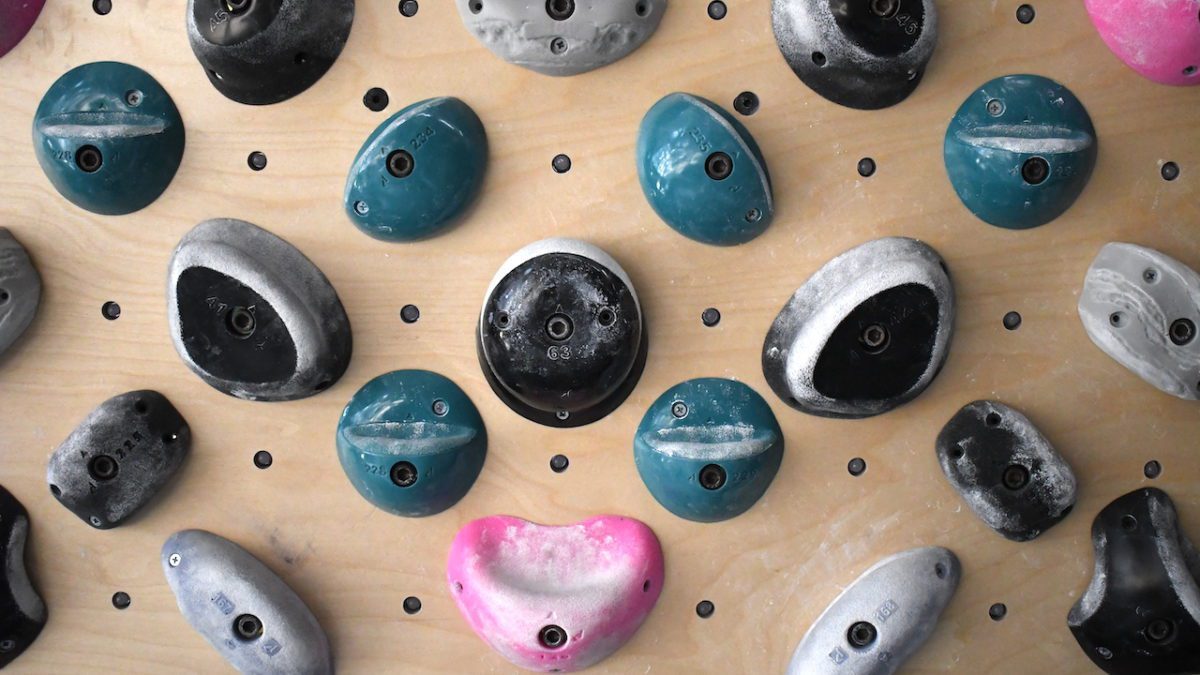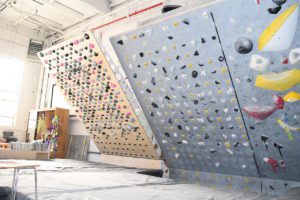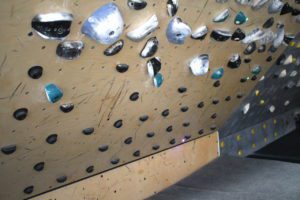Move Over Kilter and MoonBoard, the Decoy Board is Here
The Decoy Board released in Brooklyn, New York last week. The world's newest standard board is also the first to come out of the Northeast

Despite the plastic grips and standard bolt pattern, Dan Yagmin’s new Decoy Board resists comparison and climbs a style unique to itself. This is good. Finding a place in today’s standard board market is hard. It is only going to get harder.

Last year, Gripped spoke to Yagmin about his board, company, and approach to climbing. Just over a year later, he has released what has become the most talked about product release of 2022. Like the Kilter Board, Yagmin’s Decoy Board comes in numerous dimensions, but you’re most likely to climb on the 8 x 12. That is the model that best fits alternate companies’ hold sets. It is also the board that GP-81 has purchased and built in their Brooklyn climbing gym.
GP-81 is one of the premier bouldering locations in New York. It has acquired a performance-based reputation. The setting and wall angles of the facility suggest an outdoor focus, and their recent acquisition of a Decoy Board speaks toward that theme. In the past, GP-81 featured both the 2017 and 2016 sets of the MoonBoard. Today, the 2022 Decoy Board sits aside the 2016 MoonBoard providing a direct comparison. There are a lot of differences.
To begin, the Decoy Board is adjustable like the Kilter and Tension Boards. Naturally, the MoonBoard is a rigid structure designed to stay at 40 degrees. A modern board should be adjustable, and it will be interesting to see if Moon ever decides to go down this route.
The problem with adjustability comes with hold design. Making a hold that works at a single angle versus making a hold that works at all angles are two different processes. Tension worked through this by making standard shapes. Kilter got around this through testing. Decoy appears to have taken a three-dimensional approach to board design to get around this problem.
More than any other standard board, aside from maybe the Grasshopper board, the holds on the Decoy Board protrude from the wall. Even the small edges come far off the backboard and some are nestled in frictionless dual-text to make them even more precise in their usage.
The protruding grips make for more three-dimensional movement and allow a lot of opportunities for foot work. Bicycles and reverse bicycles are more common on this board than any other, and, within the context of steep outdoor climbing, the Decoy Board does a good job of reflecting the multi-featured approach of climbing in an angle. The larger grips also allow climbers to use the board while they have finger injuries.
Naturally board climbing is very aggressive on the hand’s tendons and ligaments, but the plastic grips do not necessitate the same ferocity as the Moon or Tension Board. With that said, the smaller grips of the board do ask climbers to grip hard, and bare down, so if you need to increase your finger strength the board will be able to fulfill this request.
Yagmin mentioned that he wanted this board to be something that people could warm up on as well as project, and it seems that he achieved his goal. At angles near 40-degrees, warming up remains hard, but the start holds are good and there exist problems in the V2 range. However, the Kilter Board is a better board for warming up.

With that said, the Kilter is also more expensive. While the Decoy Board is cheaper than the Kilter, it still carries a cost. The 2016 MoonBoard is the cheapest popular standard board on the market and allows climbers all of the holds for the set for around $1,140 USD, not including shipping.
This cost is broken over three hold sets, all of which are usable should an individual wish to buy further hold sets for the 2017 and 2019. This is a huge advantage that Moon has over the competition. Once a climber has the 2016 sets, getting a brand generation only costs the user the price of the remaining sets. Still expensive, but modular.
Yagmin has also gone the modular route, using numerous hold sets to build his board. The board comes with expansion packs. With that said, the Foundation Set does cost less than the 2016 MoonBoard. The Foundation Set is the most basic form of the board and costs $1074. If you purchase the foot holds as well that is another $236 USD. If you want to get the full set, with all of the expansion packs, it will run you a total of $3500 USD, and if you want the lights, that’s another $1200.
Lights are always an expensive aspect of these boards, and today, we will not consider them as they are technically not essential. Instead, let’s talk about value. The 2016 MoonBoard comes with 144 unique grips, not including the kickboard. The Decoy Board comes with 288 grips if your purchase every hold set. Many of these holds are reflections of one another and allow for climbers to try each boulder problem twice by reflecting the problem over the centre line of the board.

Clinical climbers that fell in love with this aspect of the Tension Board will also enjoy it here. We have already spoken about the large size of the holds, but the grips are unique for boards in other ways as well. It is the first board to offer dual texture holds making for a unique style of board climbing. The foot work is surprisingly precise once you get off the footholds as many of the grips are not that sticky.
The plastic hangs onto the climber’s skin more than Kilter holds, and less than new versions of the black and white MoonBoard hold sets. The style of climbing on the board is static. Dead-points do exist, but without a kicker, the climber remains engaged over the length of the climb. Yagmin spoke about how a kickboard asks the climber to ride it until they ultimately leap to the next grip. By removing the kicker, the Decoy Board forces tension from the start position.
As a training tool, the Decoy Board is interesting. It is probably the most beta dominant board on the market and allows for the use of technique over power. It also has flat edges embedded in dual text that forces the climber to bare down extremely hard. The crimps on the board are unique in this way. The dual-tex makes them difficult to pinch in the way a person might on a Tension board. This is a strong component of the Decoy Board. With that said the board, overall, does not force a high degree of grip strength. The sloping, slightly positive larger grips, and the comfortably angled smaller grips allow climbers to hit everything just as they would like. This seems to suggest a lower risk for injury, but also a lower risk for raw power improvement.
Still, it is a board. A person can make it whatever they choose. The app functions well, and the climbs that have already been set are fun and comparable in difficulty to the MoonBoard. Additionally, the Decoy Board is the first non-MoonBoard to have a Benchmark system. Several strong climbers have worked with Decoy to provide a base of standard climbs on which a person can test themselves. The Benchmark feature of the app should be out within a few days of this article’s publication.
Taking the full board into view, Decoy’s product is fun. It is comfortable and the holds work within the context of the system. Although it is also somewhat expensive, but it may be what you are looking for if other boards injure your fingers. It is hard to know where in the training series this board lands, but perhaps that will become apparent with time. For now, the sloping and nuanced footholds suggest a stronger technical component than what a person might find with another board.


